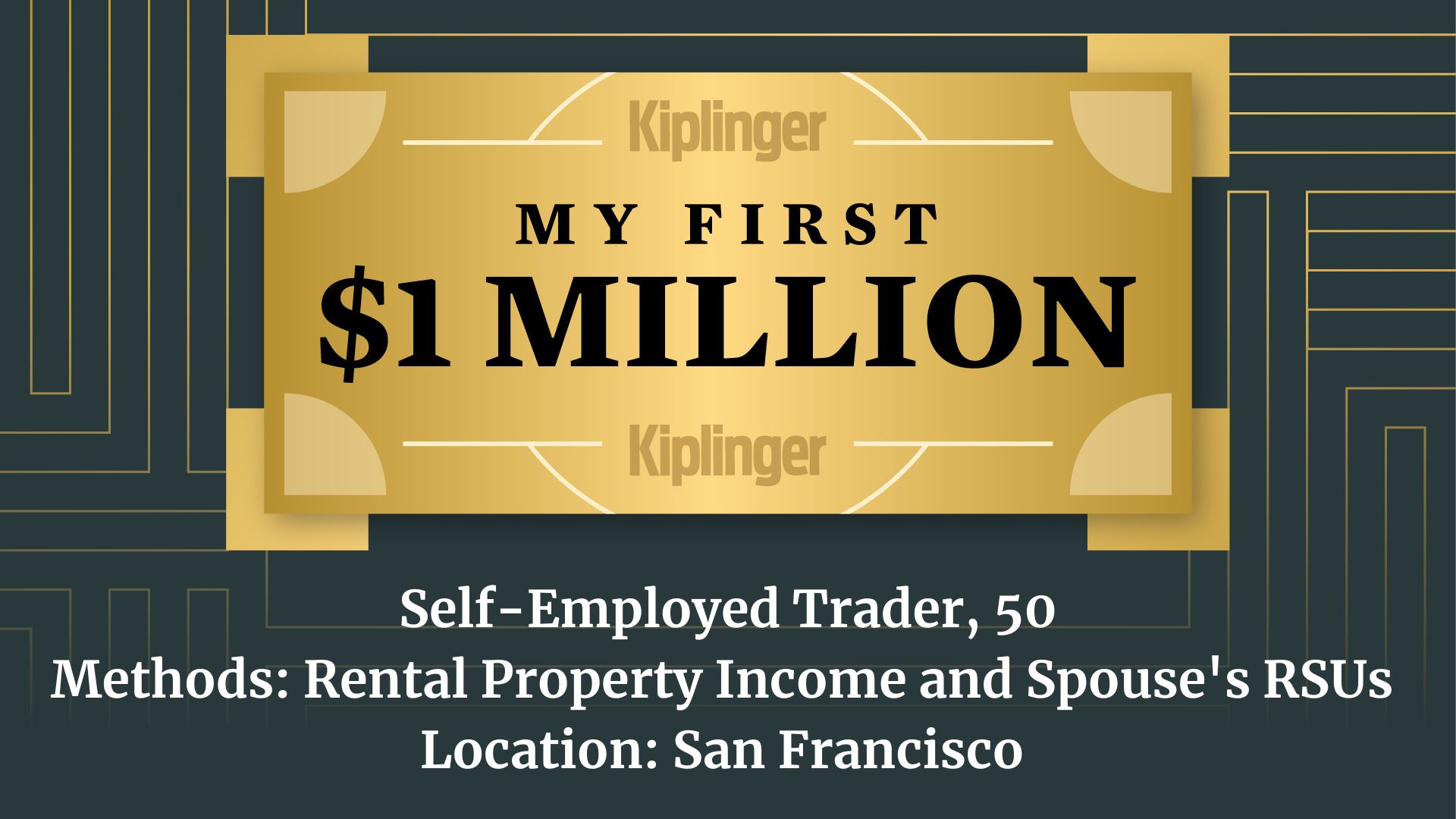I'm an Investment Adviser: This Is the Retirement Phase Nobody Talks About
What you do in the five years before retirement and the first 10 afterward — known as the Critical 15 — can establish how comfortable you'll be for the rest of your life. Here's how you can enter this phase prepared.


What if the most important part of retirement planning happens in a window most people overlook?
Most people think of retirement in two stages: accumulation, when you save and invest, and distribution, when you start spending. But there's a crucial middle phase that rarely gets the attention it deserves — the Critical 15.
These five years before you stop working and the first 10 after often determine how confident and comfortable you'll feel for the rest of your life.
From just $107.88 $24.99 for Kiplinger Personal Finance
Become a smarter, better informed investor. Subscribe from just $107.88 $24.99, plus get up to 4 Special Issues

Sign up for Kiplinger’s Free Newsletters
Profit and prosper with the best of expert advice on investing, taxes, retirement, personal finance and more - straight to your e-mail.
Profit and prosper with the best of expert advice - straight to your e-mail.
It's the transition period in which paychecks end, withdrawals begin, and every decision carries extra weight.
Kiplinger's Adviser Intel, formerly known as Building Wealth, is a curated network of trusted financial professionals who share expert insights on wealth building and preservation. Contributors, including fiduciary financial planners, wealth managers, CEOs and attorneys, provide actionable advice about retirement planning, estate planning, tax strategies and more. Experts are invited to contribute and do not pay to be included, so you can trust their advice is honest and valuable.
Many retirees enter this phase unprepared, caught off guard by unexpected tax bills, Medicare surcharges or market downturns that hit just as they start drawing income.
How do you turn awareness into action? The first step in navigating the Critical 15 is creating a plan for a steady income so you can have control, flexibility and peace of mind no matter what the markets do.
Income planning during the Critical 15
The first step is learning how to create your own "retirement paycheck". Separate essentials (housing, health care, food) from discretionary expenses (travel, hobbies, gifts).
Your budget should work like a dashboard, giving you a clear view of your spending and helping you make adjustments, not a diet that makes you feel restricted.
Once you understand what you'll need to spend, the next step is deciding where that money should come from and when. The timing and source of your withdrawals can make a major difference in how long your savings last and how much you pay in taxes.
Social Security timing. The right time to claim isn't just about the biggest check, it's about how your benefits interact with taxes and investment withdrawals. In some cases, filing earlier can help preserve investments during a market downturn by reducing the need to sell assets at low prices.
Account sequencing. The order you draw from pretax, Roth or brokerage accounts directly affects how long your savings last. Instead of spending down one type of account first, it can be smart to blend withdrawals to help keep your taxable income consistent over time.
For example, you might pull from Roth accounts in high-income years or during market downturns and use taxable funds when gains can be realized at lower rates. The goal is to smooth your tax bill over the years rather than face costly surprises later.
Spending guardrails. Instead of sticking to a rigid 4% rule, build flexibility into your plan. Set spending thresholds that tell you when to adjust. If markets rise and your portfolio grows, you can safely increase withdrawals.
If markets drop, scale back slightly to give your investments time to recover. This approach keeps your plan sustainable without forcing unnecessary sacrifice when times are good or panic when they're not.
Retirement tax planning during the Critical 15
Income planning doesn't stop once you've figured out where the money will come from — it's just the start.
The real opportunity lies in how you manage taxes on that income, especially during the Critical 15 when small decisions compound over time. For most retirees, this is the last and best window to shape your lifetime tax bill.
Several moving parts make this period especially complex:
Social Security and taxes. Up to 85% of your benefits can be taxable, depending on how much other income you earn. Coordinating withdrawals and benefit timing helps you avoid unnecessary tax on your Social Security.
Medicare premiums. Higher income can trigger IRMAA surcharges, which are based on your tax return from two years earlier. Managing income levels in your early retirement years can prevent these surprise costs.
Account mix. Many retirees have most of their savings in pre-tax accounts, which can backfire when required minimum distributions (RMDs) begin. Building tax diversification early — across taxable, pre-tax and Roth accounts — gives you more control of your tax bracket later.
Heirs' taxes. A surviving spouse often ends up in a higher tax bracket filing as a single taxpayer, and non-spouse heirs must now empty inherited IRAs within 10 years. Thoughtful planning can reduce that future burden.
The most effective moves in this phase often include Roth conversions, in which you gradually shift money from pretax to Roth accounts to create tax-free income later, and tax diversification, blending withdrawals across account types to keep your effective tax rate steady over time.
Looking for expert tips to grow and preserve your wealth? Sign up for Adviser Intel (formerly known as Building Wealth), our free, twice-weekly newsletter.
These steps might not make a big splash in a single year, but over a 20- or 30-year retirement, they can save hundreds of thousands in taxes and add years of longevity to your portfolio.
Investment planning during the Critical 15
The Critical 15 also brings one of retirement's biggest risks: sequence of returns — poor market performance early on that permanently damages your portfolio. Selling during downturns locks in losses and can derail even strong savers.
To protect yourself:
- Build a "war chest." Hold three to five years of essential expenses in stable assets such as Treasuries or short-term bonds.
- Match risk to timeline. Keep near-term funds conservative, but let long-term money keep growing.
- Stick to your plan. Reacting to headlines often hurts more than it helps. Let your strategy (not emotion) drive decisions.
Key steps to take during the Critical 15
After you've looked at income, taxes and investments, it's time to bring the pieces together. A checklist highlights the most important actions to take and revisit to stay organized and on track through this critical transition.
- Start early. Begin at least three years before your Critical 15 phase is due to begin. This will allow time to align your investments, taxes and income strategy.
- Build a flexible income plan. Design a spending approach that adjusts for markets, health costs or lifestyle shifts — think dashboard, not diet.
- Be proactive with taxes. Use Roth conversions, smart withdrawal sequencing and charitable giving to reduce your lifetime tax bill.
- Create a safety reserve. Keep several years of spending in low-volatility assets to weather market declines without panic selling.
- Plan for health care. Understand how income affects Medicare premiums and explore options such as health savings accounts (HSAs) or supplemental insurance.
- Revisit regularly. Update your withdrawal plan, tax projections and investment mix at least once a year — or sooner if life changes.
The Critical 15 isn't just another planning concept — it's the phase in which everything you've built finally comes together.
By coordinating income, taxes, investments and health care during this window, you gain flexibility and confidence for the years ahead.
Related Content
- A 10-Year Retirement Planning Checklist
- The 'Rule of 25' for Retirement Planning
- Retirement Income Strategies for the Long Haul
- I'm a Financial Planner: Here Are Five Phases of Retirement Planning You Have to Get Right
- How to Create Retirement Income That's Driven by Cash Flow
Profit and prosper with the best of Kiplinger's advice on investing, taxes, retirement, personal finance and much more. Delivered daily. Enter your email in the box and click Sign Me Up.

Kyle Hammerschmidt is the founder and CEO of MOKAN Wealth Management, a firm dedicated to helping self-made 401(k) and IRA millionaires keep more and pay less in retirement through a plan-led approach. He developed The Five Seed System™, a framework that connects all key areas of retirement — income, taxes, investments, health care and legacy — into one coordinated plan.
-
 10 New Year's Resolutions for Retiring in 2026
10 New Year's Resolutions for Retiring in 2026These New Year's resolutions will help you retire in 2026 with confidence in your financial strategy.
-
 How Much Would a $50,000 HELOC Cost Per Month?
How Much Would a $50,000 HELOC Cost Per Month?Thinking about tapping your home’s equity? Here’s what a $50,000 HELOC might cost you each month based on current rates.
-
 My First $1 Million: Self-Employed Trader, 50, San Francisco
My First $1 Million: Self-Employed Trader, 50, San FranciscoEver wonder how someone who's made a million dollars or more did it? Kiplinger's My First $1 Million series uncovers the answers.
-
 10 New Year's Resolutions for Retiring Next Year
10 New Year's Resolutions for Retiring Next YearThese New Year's resolutions will help you retire in 2026 with confidence in your financial strategy.
-
 Think You Know How to Be Happy in Retirement? These 9 Stats May Surprise You
Think You Know How to Be Happy in Retirement? These 9 Stats May Surprise YouWhen it comes to your retirement happiness, don't believe everything you hear. We've turned to solid research for the facts on finding your bliss in retirement.
-
 If You're Retired or Soon-to-Be Retired, You Won't Want to Miss Out on These 3 OBBB Tax Breaks
If You're Retired or Soon-to-Be Retired, You Won't Want to Miss Out on These 3 OBBB Tax BreaksThe OBBB offers some tax advantages that are particularly beneficial for retirees and near-retirees. But they're available for only a limited time.
-
 Waiting for Retirement to Give to Charity? Here Are 3 Reasons to Do It Now, From a Financial Planner
Waiting for Retirement to Give to Charity? Here Are 3 Reasons to Do It Now, From a Financial PlannerYou could wait until retirement, but making charitable giving part of your financial plan now could be far more beneficial for you and the causes you support.
-
 Are You Ghosting Your Finances? What to Do About Your Money Stress
Are You Ghosting Your Finances? What to Do About Your Money StressAvoidance can make things worse. You can change your habits by starting small, talking with a family member or friend and being consistent and persistent.
-
 Stocks Keep Climbing as Fed Meeting Nears: Stock Market Today
Stocks Keep Climbing as Fed Meeting Nears: Stock Market TodayA stale inflation report and improving consumer sentiment did little to shift expectations for a rate cut next week.
-
 Crypto Trends to Watch in 2026
Crypto Trends to Watch in 2026Cryptocurrency is still less than 20 years old, but it remains a fast-moving (and also maturing) market. Here are the crypto trends to watch for in 2026.
-
 Original Medicare vs Medicare Advantage Quiz: Which is Right for You?
Original Medicare vs Medicare Advantage Quiz: Which is Right for You?Quiz Take this quick quiz to discover your "Medicare Personality Type" and learn whether you are a Traditionalist, or a Bundler.